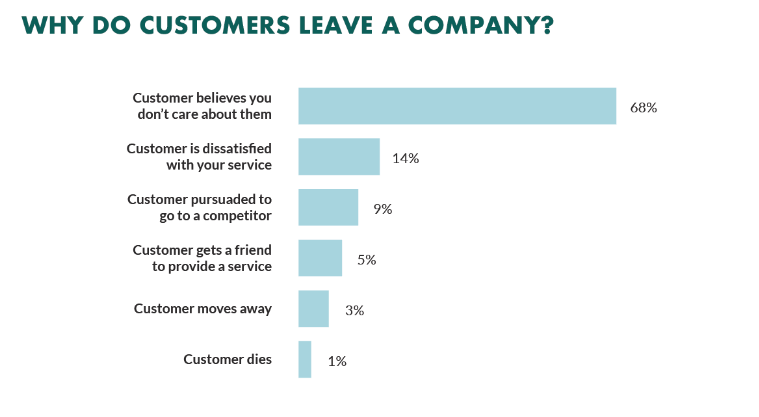These Surprising Tactics Can Help You Reduce Customer Churn in SaaS

Are you aware that the average SaaS company has a churn rate of around 5% per month, equating to an annual churn rate of 60%? According to a study by Totango, this can be attributed to a lack of focus on customer success, with only 30% of companies having a customer success program in place.
As Jason Lemkin, Founder of SaaStr, points out, “Churn is the single most important metric in any recurring revenue business. It will make or break you.” Losing customers not only impacts revenue, but it also affects the long-term growth potential of the business.
The good news is that there are proven strategies to reduce churn and increase customer retention. By investing in customer onboarding, support, and success, and by regularly updating product features, SaaS companies can keep their customers happy and engaged. By doing so, they can improve revenue and drive growth.
Let’s take a closer look at these strategies and explore how SaaS companies can implement them effectively.
Reasons behind churn in SaaS
Churn, or the loss of customers, is a common challenge for SaaS businesses. There are a variety of reasons why users may choose to stop using a product, ranging from pricing and feature-related issues to poor user experience and lack of engagement. Let’s understand the factors that contribute to churn’
Poor Onboarding Experience
Imagine you’re starting a new job, and your manager just hands you a bunch of papers and says “good luck.” That’s kind of what it’s like for SaaS users who are given inadequate onboarding. If users aren’t shown how to use the product properly, they’re less likely to stick around. As a result, they’re more likely to churn.
Lack of Customization
People like to feel unique, and the same goes for SaaS users. If users feel like they’re not getting a customized experience, they’re more likely to seek out a competitor who does offer a more personalized experience. This lack of customization can manifest in different ways, such as lack of integrations or the inability to personalize the interface.
Poor Customer Support
Have you ever had a problem with a product, and it felt like the customer support team wasn’t listening? That’s a frustrating experience, and it can lead to users churning. If users feel like they’re not getting the support they need, they’re more likely to look for an alternative
High Price Point
If a product is too expensive, it can be a significant barrier to entry for potential users. If users are churning due to high pricing, it may be worth exploring alternative pricing models, such as a freemium model or tiered pricing.
Lack of Updates and Innovation
People like to see progress and innovation in the products they use. If a product feels stagnant or outdated, users may begin to lose interest and look for alternatives. This lack of updates and innovation can manifest in different ways, such as not addressing user feedback or failing to introduce new features.
Difficulty of Use
If a product is challenging to use, users may begin to feel frustrated and overwhelmed. This difficulty of use can manifest in different ways, such as complex navigation or unintuitive interfaces.
So those are six of the most common reasons behind churn in SaaS. By addressing these issues, SaaS companies can reduce churn and increase retention, leading to a more successful and profitable business.
Churn, be gone! Effective strategies to keep your SaaS users happy and loyal
Reducing churn is critical for the success of any SaaS company. In order to maintain a healthy customer base and ensure long-term revenue growth, SaaS companies must focus on implementing strategies and tactics to keep customers engaged and satisfied. Understanding how to create a positive customer experience in SaaS is essential for achieving this goal, as it helps build strong customer relationships and fosters loyalty.
Know the root cause
Why do customers leave? It’s crucial to understand the reasons behind churn if you want to reduce it. One of the most effective ways to do this is by directly communicating with customers and showing that you genuinely care about their experience. Don’t settle for impersonal exit surveys – pick up the phone and have a conversation. Research shows that a staggering 68% of customers leave because they don’t feel valued.

Source:- SuperOffice
So, make sure to leverage all available channels, from email to social media, to gather feedback and gain insight into customer needs. By actively seeking out and listening to customer feedback, you can pinpoint the root causes of churn and take action to improve your product or service.
Set the Stage for Success
Onboarding is the process of introducing new users to a product or service and helping them become familiar with its features and capabilities. Poor onboarding experiences can lead to frustration and confusion, which can ultimately result in users abandoning the product or service and churning.
Investing in a comprehensive and engaging onboarding experience can help users get started quickly and easily. This involves designing an onboarding process that is clear, concise, and easy to follow. It should provide users with a step-by-step guide on how to use the product, highlight its key features and benefits, and offer interactive tools and resources to help users get the most out of it.
Deliver Exceptional Service
Providing excellent customer support can be the key to reducing churn rates for SaaS companies. By being responsive, helpful, and reliable, you can build trust and confidence in your users, making them more likely to remain loyal customers. Here are some reasons why investing in customer support can be a game-changer for SaaS companies:
- Demonstrates a commitment to customer success
- Helps users overcome obstacles and navigate product features
- Increases user satisfaction and engagement
- Fosters a positive reputation and word-of-mouth marketing
- Boosts retention rates and long-term revenue
Personalize the User Experience
Users want to feel like the product is tailored to their needs. By offering personalized features, such as customized dashboards or integrations with their preferred tools, you can help users feel more engaged and less likely to churn.
Use Data and Analytics
Data and analytics are essential for SaaS businesses to gain insights into user behavior and preferences. By using tools such as Google Analytics or Mixpanel, businesses can track user interactions, analyze patterns and trends, and make data-driven decisions to optimize their product and improve the user experience.
For example, if data shows that a particular feature is rarely used, the business may choose to remove or re-design it to better align with user needs. Analyzing data can also help businesses identify potential roadblocks in the user journey and take steps to address them.
Regularly Release New Features and Updates
Keeping up with user demands and market competition is crucial for SaaS businesses, and regular feature releases and updates are a powerful way to achieve this. Ensuring a strong SaaS product-market fit is essential in this process, as it helps businesses align their offerings with the needs and expectations of their target market. By consistently innovating and improving their product, businesses can stay ahead of the curve and demonstrate their commitment to user satisfaction.
Furthermore, by utilizing user feedback and analytics, companies can prioritize features and updates that will have the greatest impact on retention and overall success. Ultimately, investing in regular updates and improvements is an investment in the longevity and growth of the business.
Be Transparent and Honest:
Transparency and honesty are critical for SaaS businesses to retain customers. According to research by HubSpot, 93% of customers are more likely to remain loyal to a company that offers transparency, while 85% are more likely to stay with a trusted SaaS development company during a crisis if they are kept informed. Similarly, a study by Label Insight found that 94% of consumers are likely to be loyal to a brand that offers complete transparency.
These statistics underscore the importance of transparency and communication in keeping customers satisfied. When SaaS companies are upfront about any issues or problems with their product, it builds trust with users and shows a dedication to their needs. By proactively addressing concerns and maintaining open communication, businesses can reduce churn rates and foster loyalty.
Continuously Engage and Nurture Users
Staying connected with users and providing them with ongoing value is key to reducing churn and building long-term loyalty. By offering regular newsletters, educational resources, and hosting webinars or events, SaaS businesses can keep users engaged and invested in their product. This ongoing engagement also provides an opportunity to collect valuable feedback and insights, helping businesses to better understand their users’ needs and pain points.
Unleashing the Hidden Potential of Complaints
Complaints are not just negative feedback, but a gateway to improving your product or service. When a customer complains, they are giving you an opportunity to rectify the situation and win back their loyalty. What’s more, their complaint may be an indication of a larger issue that needs to be addressed.
According to Strauss & Seidel, “Dissatisfied customers whose complaints are attended to are more likely to remain loyal and even become advocates than average customers”. So, instead of avoiding complaints, embrace them as a valuable tool for improving your product or service. When handled correctly, complaints can help you identify areas for improvement and ultimately enhance the overall customer experience.
Conclusion
Reducing customer churn is essential for the long-term success of any SaaS business. By implementing strategies such as improving user experience, providing excellent support, and implementing a customer success program, you can increase customer retention and reduce churn. As an experienced top custom software development company, Finoit has the expertise and experience to help you achieve these goals. Connect with our development experts to learn more about how we can help you reduce churn and drive long-term success for your SaaS business.
Frequently Asked Questions
How can identifying at-risk customers help reduce churn in a SaaS business?
As a SaaS business, when you identify at-risk customers, it allows you to take proactive steps. You can understand what it is that’s making your customers leave you, and thus frame appropriate retention strategies – drive targeted marketing campaigns and enhance personalized communication. Overall, identifying at-risk customers can be crucial to increase their customer lifetime value and boost revenue.
What are some key metrics to monitor in order to reduce customer churn?
In order to reduce customer churn, SaaS businesses need to closely monitor and keep track of the following metrics:
- Churn Rate
- Customer Lifetime Value (CLTV)
- Net Promoter Score (NPS)
- Monthly Recurring Revenue (MRR)
- Annual Recurring Revenue (ARR)
- Customer Acquisition Cost (CAC)
Can incentives and discounts help reduce churn in a SaaS business?
Yes, incentives and discounts can prove effective in reducing churn, only that they must be used in conjunction with other retention strategies. They can be the ways to incentivize old customers, prompting them to continue their relationship. Through free upgrades and additional features, incentives and discounts can add value to customers and discourage them from switching to your competitor.
